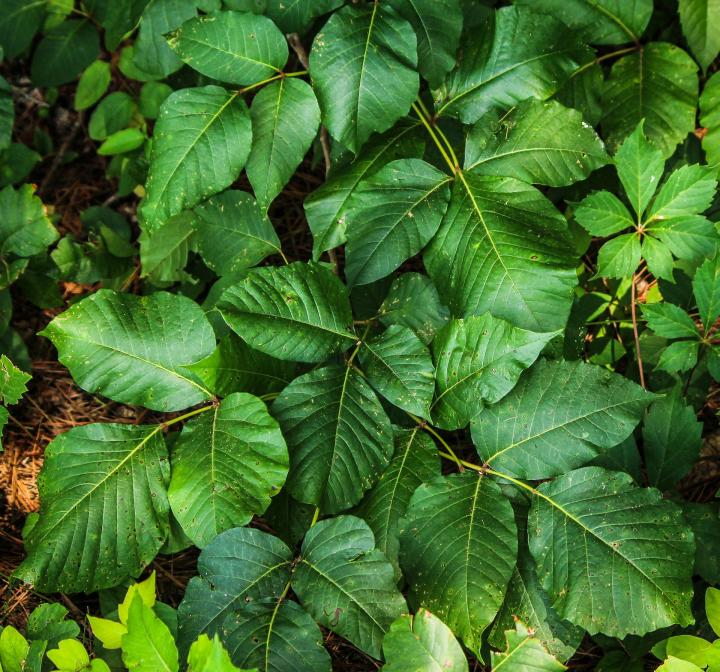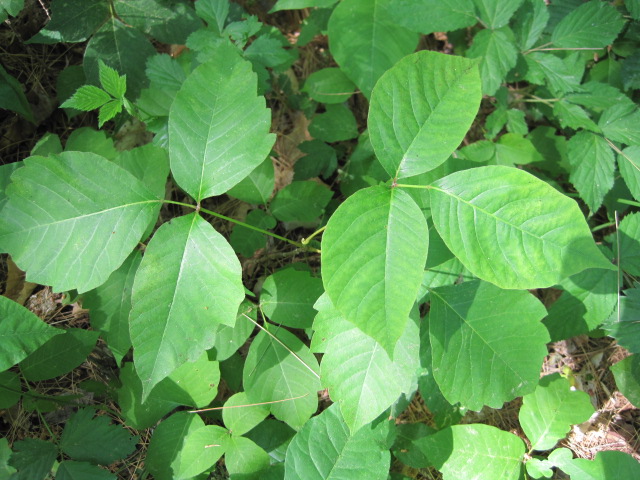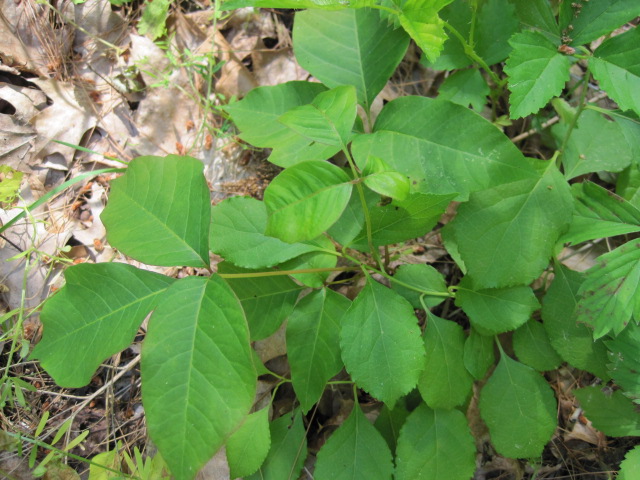






Got poison ivy in your own garden? As a gardener myself, I feel your pain! Here are my tips on how to get rid of poison ivy in the garden and yard.
Indeed, poison ivy has plagued man—and gardeners—since the dawn of time. I suspect Adam and Eve encountered it soon after leaving the Garden of Eden while looking for some shiny new leaves to wear. Most Native American tribes have names for poison ivy, all of which translate to “the plant that makes you hurt.” It was first called “poysoned ivy” in 1624 by Capt. John Smith after his visit to America.
Called Toxicodendron, which means poisonous tree, poison ivy is a member of the cashew family, along with pistachios and mangoes. Unlike its edible cousins, all parts of this plant are toxic to humans except the nectar and pollen. Goats can eat it with no ill effects and bees can make a non-toxic honey from it. Dogs and cats are immune to the resin—urushiol—that causes the itch, but they can carry it on their fur to rugs, furniture, and us. Another relative of poison ivy which also carries the urushiol is poison oak.

Poison ivy can be hard to identify. Aside from the characteristic grouping of three leaves, it can be a low-growing plant or the size of a large shrub. It can grab onto tree bark with its hairy rootlets and climb up. The leaves can be shiny or dull, thick or thin, smooth or hairy, and the edges smooth or toothed. Explore more tips on identifying and treating poison ivy.
When we first moved to our poison ivy covered cottage in the woods, I tried non-chemical methods of eradication including boiling water, salt, salt water, boiling salt water, and vinegar. I felt like I was trying to make poison ivy pickles! None had a lasting effect.
The best method has been suiting up in long pants, long sleeves, boots, and gloves and pulling it out by the roots. Thirty years later I’m still battling poison ivy, but I have at least gained the upper hand.
When rooting out poison ivy, never throw it on a brush pile to be burned. Inhaling the smoke from it can cause dangerous mouth, throat, and lung inflammation. I bag up the roots as I pull them and cart them off to the transfer station. Urushiol can linger on garden tools and clothing for years! Always isolate your poison ivy clothes and wash them separately from the rest of the family’s laundry. Any tools used need to have their handles thoroughly hosed down.
We have controlled some smaller patches of poison ivy by keeping that area mowed. Eventually it gives up and dies off. Some folks have had good luck smothering the vines with black plastic but it is sneaky stuff and may come up around the edges.
Vines that are growing up trees can be cut off so the tops die. Then the roots can be pulled.

You can use an ocean of calamine lotion to soothe your poison ivy rash or try one of these natural remedies:
My first memorable encounter with poison ivy was when I was about nine and awoke one summer morning unable to open my eyes. Overnight my whole body had swollen, especially my face. The doctor surmised that since I hadn’t had any direct contact with the plant, I must have just walked by it on a hot afternoon when the oils were vaporizing into the air and my sweaty little pores were open enough to absorb it. It also was my first encounter with the miracle of steroids.
If exposed while gardening, you have about 30 minutes to wash the urushiol off your skin. Use cool water, no soap needed to be effective. There are some poison ivy washes on the market that remove urushiol. One called Technu was developed during the Cold War era to wash off radioactive particles! It has proven to be an effective skin decontaminant when used immediately after contact. It can’t stop a rash once it has started, but it can minimize the reaction.
Poison ivy actually has some useful qualities. Early Native Americans used the sap to make an indelible black ink for decorating baskets, and they often wove baskets from the vines. The Peabody Museum at Harvard has a Pomo Indian wedding basket made from poison ivy vine by a mother-in-law as a gift for her new son-in-law! What a welcome to the family!
Copyright © www.100flowers.win Botanic Garden All Rights Reserved